
Location road map for Fort Vancouver National Historic Site / National Park Service
If you happen to be heading north on the I-5 Corridor from Oregon, or west along Washington State Route 14 toward your intended destination of Olympic, Mount Rainier, or North Cascades national parks, you should consider stopping for a day, or even just a half day, at Fort Vancouver National Historic Site to soak in a little history and take a look back into Washington’s fur trading, soldiering, and aviation pasts. I decided to do just that, traveling from my summer-sunbaked home in central Washington to spend a few hours touring Fort Vancouver and the Pearson Air Museum.

Areas visited by author at Fort Vancouver National Historic Site / National Park Service
Fort Vancouver
The Pacific Northwest is replete with fur trading history. Pickings were rich for trappers, from muskrat to mink to beaver, otter, badger, bear, and even wolf. Small wonder Hudson’s Bay Company chose to set up the administrative center of Fort Vancouver along the Columbia River to network throughout the Pacific Northwest as well as “Russian Alaska and Mexican California.”
Home to 600 employees at one time during its 1829 – 1860s history, Fort Vancouver was originally built on a bluff overlooking the Columbia River and later relocated to its present site, where a tall wood post wall surrounds and encompasses the bake house, kitchen, jail, bastion, counting house, water well, Indian trade shop and hospital, fur store, blacksmith shop, carpenter shop, and Chief Factor’s house (aka the “Big House”), all based upon the original fort’s archaeological footprint. There’s also a contact station where visitors pay their entrance fee, talk with a ranger and get the latest news of events at the fort. Outside the fort is the village where HBC employees and their families lived.
Demonstration Garden
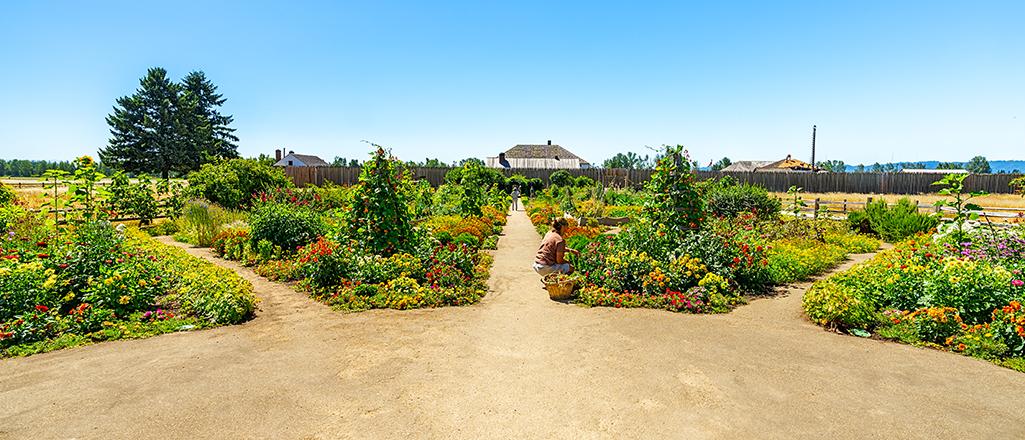
The Demonstration Garden grows fruits, flowers, vegetables and shrubs representative of the years during the fort's dominance, Fort Vancouver National Historic Site / Rebecca Latson
If you parked at the visitor center as I did, you’ll walk across the Great Meadow toward the fort. Or, you might have parked in the area next to the fort. Either way, the first thing to catch your eye as you approach the fort is the Demonstration Garden. Summer is a great time to see a plethora of vegetables and colorful flowers. Tended by volunteers, this garden is “a small, interpretive representation of the larger historic garden” which, in the mid-1840s “had expanded to eight acres and provided not only produce but also large numbers of flowering plants, shrubs, and fruit trees for the pleasure of the fort’s residents and visitors. This operation was symbolic of the power that the HBC exerted over the entire region and was representative of their extensive agricultural enterprises.”

Purple top turnips are one of the vegetable types grown in the Demonstration Garden, Fort Vancouver National Historic Site / Rebecca Latson

The many colorful blooms were abuzz with bees in the Demonstration Garden, Fort Vancouver National Historic Site / Rebecca Latson
Produce and fruit of the type grown during the fort’s dominance are still harvested today and used in cooking demonstrations at the fort’s kitchen. What is not needed by the kitchen is donated to local food banks. The seeds are saved to plant next year’s garden. Nothing goes to waste.
Inside The Fort Walls

Volunteer Reggie Coates inside the fur store, Fort Vancouver National Historic Site / Rebecca Latson
After paying your entrance fee or showing your park pass, wander the grounds and peek inside any of the open buildings for a window into the life of an HBC employee. A visit to the fur store (no, not a place that sells fur to the public) will introduce you to Reggie Coates, a 12-year volunteer to this park. In between tidbits of trivia, Reggie will describe the type of furs trapped and how they were processed for shipping. Beaver pelts were in high demand for the popular beaver felted hats.
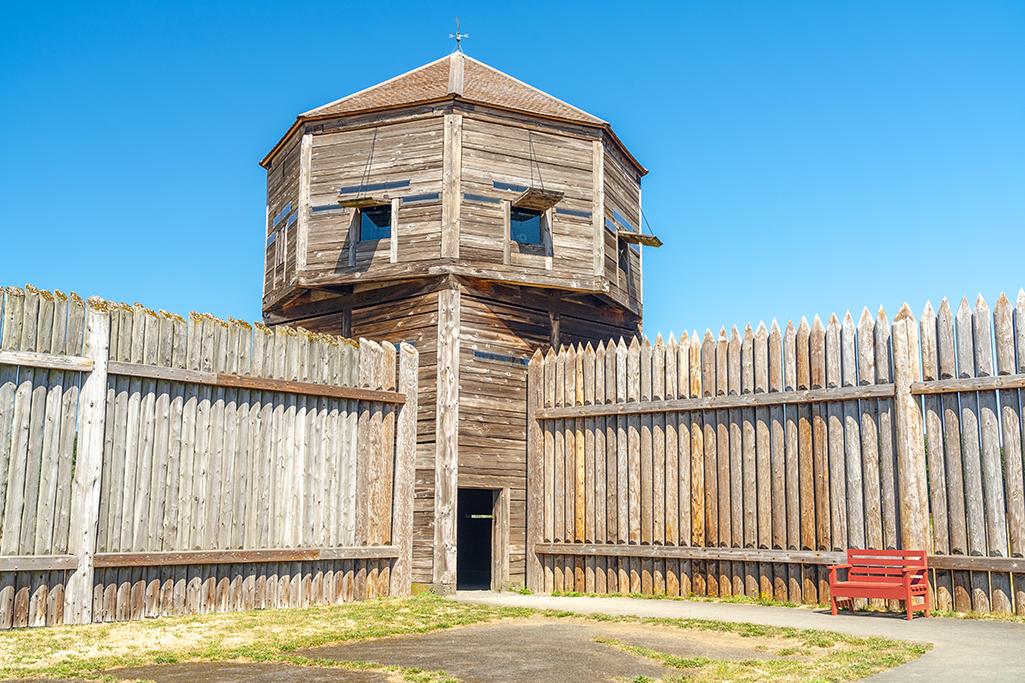
At one end of the fort is the Bastion, a turret-shaped wooden edifice built in 1845 housing cannons in the round able to fire three-pound balls to “salute arriving Company ships and prominent persons, cheer arriving and departing fur brigades, and celebrate Queen Victoria’s birthday.” According to the information plaque on the ground floor of the Bastion, “the guns at Fort Vancouver were never fired in anger.”
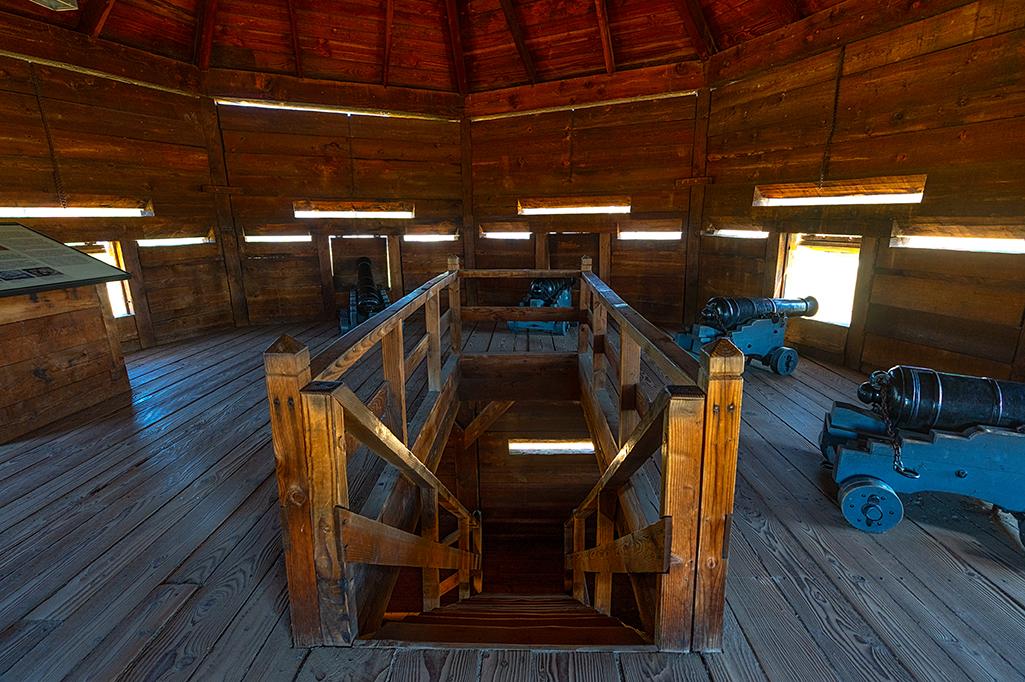
Inside the Bastion, Fort Vancouver National Historic Site / Rebecca Latson
Watch your step as you climb the two stair flights to the top. While very bright at the windows, elsewhere the natural lighting is dim and the stairs are steep. It’s a good idea to keep your hands on both sides of the railing. At the top, you can peer from above onto the fort grounds and buildings.
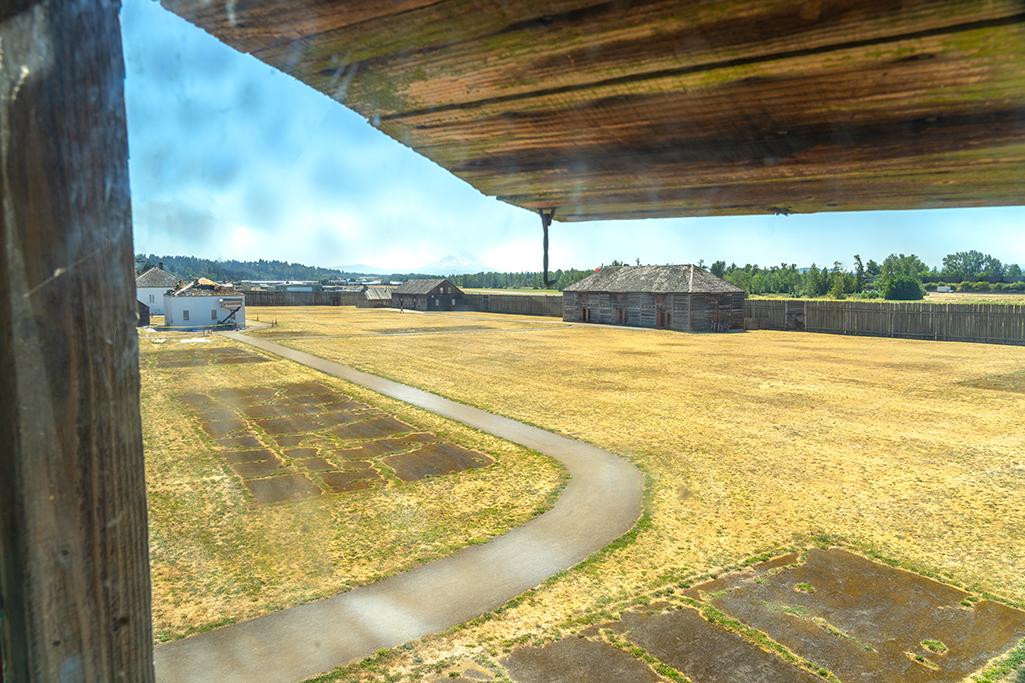
A view of the fort's grounds from the top of the Bastion, Fort Vancouver National Historic Site / Rebecca Latson
From the Bastion, walk back to the Chief Factor’s House (aka the “Big House”). Chief Factor was another name for Head Trader, and the house in which he and his family resided was built to impress, including grape vines (and grapes) intertwined within the lattice of the veranda and twin cannons at the base of the stairs leading into the house. “Here, amongst the fort's highest-ranking gentlemen, news was shared, guests were entertained, policies were enacted, strategies were discussed, and agreements were made affecting lands, resources, and people from Russian Alaska to Mexican California and the Pacific Coast to the crest of the Rocky Mountains - the HBC's vast Columbia Department.”
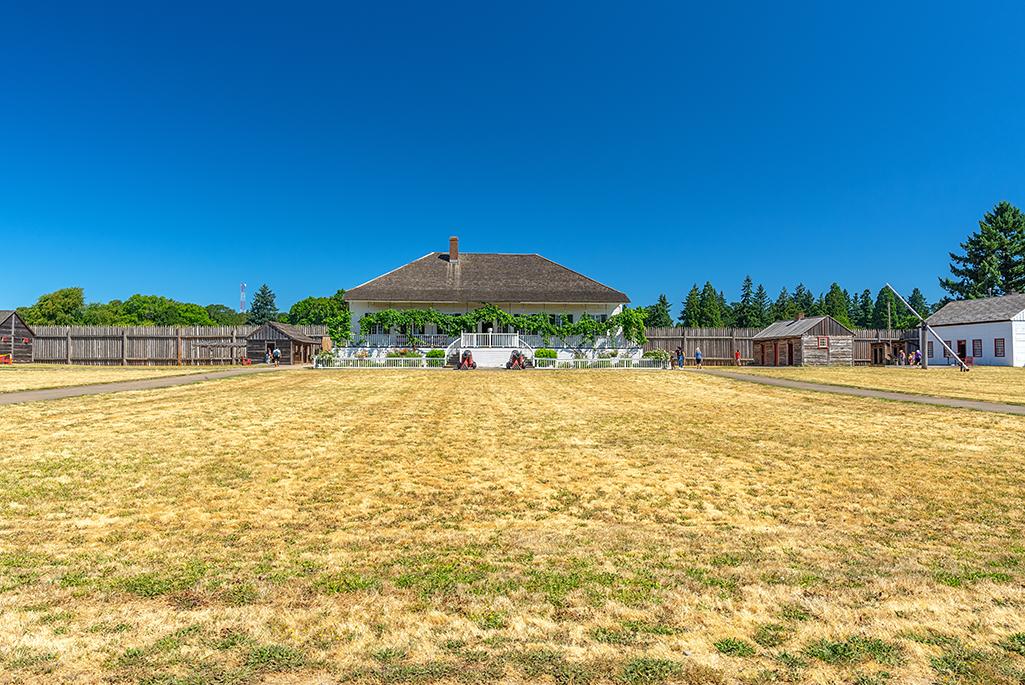
The Chief Factor's house (aka the "Big House"), Fort Vancouver National Historic Site / Rebecca Latson

Grape vines along the Big House veranda, Fort Vancouver National Historic Site / Rebecca Latson
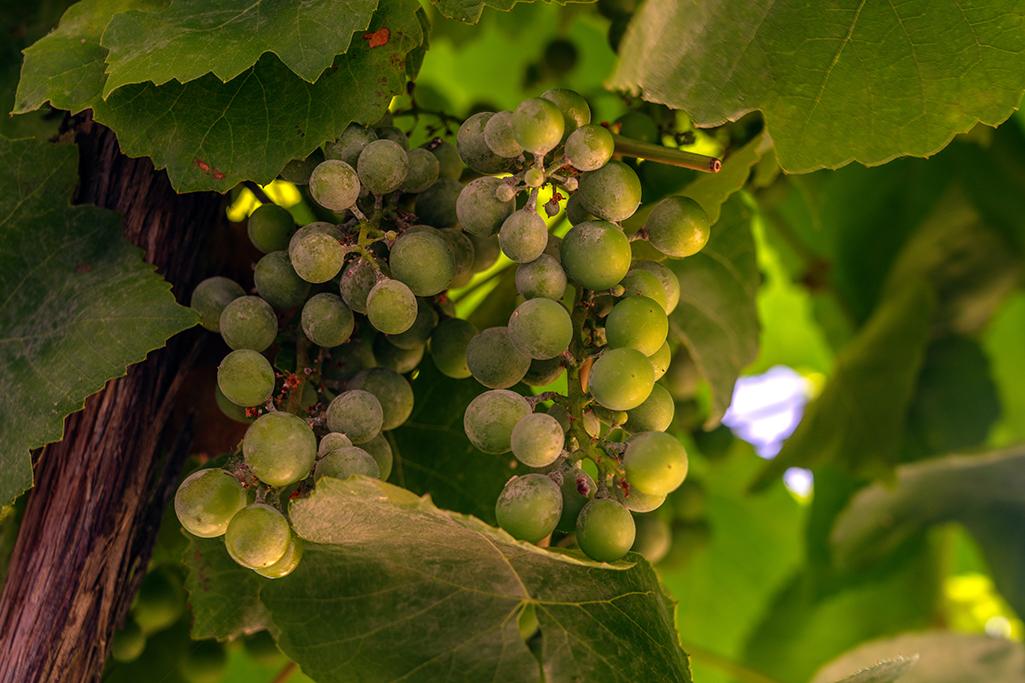
Ripening grapes along the Big House veranda, Fort Vancouver National Historic Site / Rebecca Latson
A visit to the fort’s bake house with its massive twin ovens is a look back to where bread and hardtack (aka sea biscuits) were baked. According to the informational sign just outside the bake house, “at least one of the bakers lived in the building’s attic” and the ovens were stoked and tended “around the clock” to supply the demands of HBC’s employees and sailors. As you look into the ovens, take note at their depth. Plenty of room for baking plenty of bread.
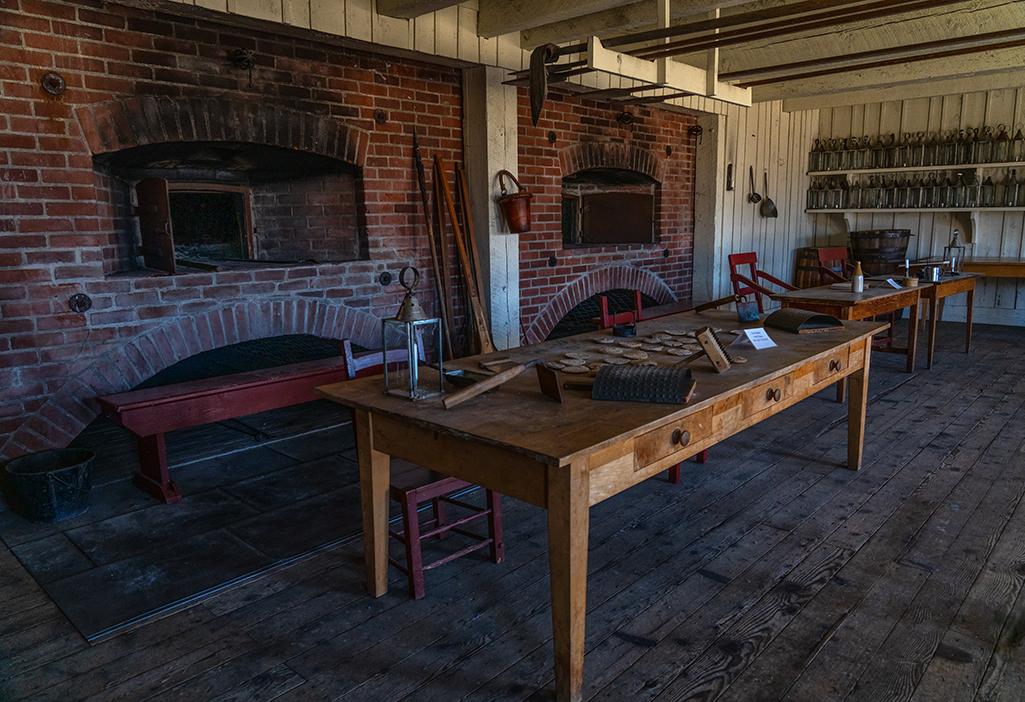
Inside the bake house, Fort Vancouver National Historic Site / Rebecca Latson
Note: be aware that not all buildings may be open to the public at the time of your visit. During my trip to this national historic site, the Counting House was closed while workers re-shingled the roof (using shingles representative of the period). Some of the buildings which are open may also have stairs or rooms locked off with only views through the doors’ windows. This makes capturing photos slightly problematic, since even the best circular polarizing filter over your lens will not remove all background reflections.
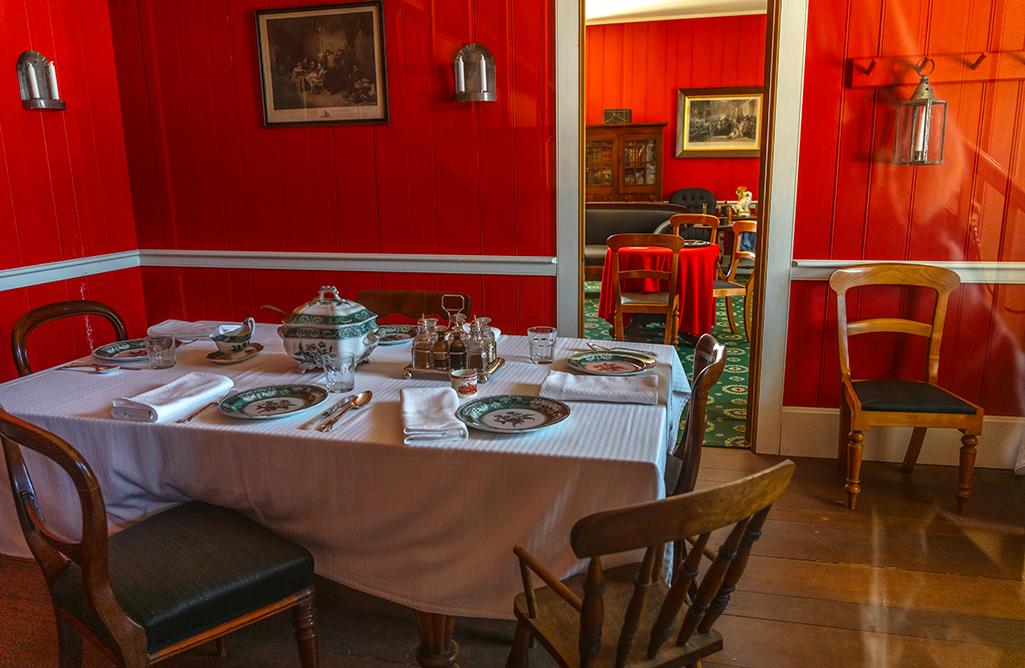
A look at a private dining room inside the Chief Factor's house, Fort Vancouver National Historic Site / Rebecca Latson
Pearson Air Museum
A short walk from Fort Vancouver is the Pearson Air Museum, adjacent to Pearson Field (“one of the oldest, continually operated airfields in the United States”). The museum is within park boundaries while the air field is outside of park boundaries. Built to chronicle the history of early aviation not only at Pearson Field but in the Pacific Northwest, the museum and air field were named / renamed after Lieutenant Alexander Pearson Jr., a test pilot for the U.S. Army and a stunt flyer who died at the age of 28 while test flying a U.S. Navy airplane at a speed of greater than 200 mph (322 kph / 174 knots).

A view over the Pearson Air Museum, Fort Vancouver National Historic Site / Rebecca Latson
Within the cavernous walls of the museum, you can walk among “pusher,” WWI fighter, and stunt planes while reading about their histories and the pilots who flew them (including Danny Grecco, Lieutenant Noel B. Evans, and Leah Hing, the first U.S.-born Chinese American woman to earn a pilot's license). You can also walk around a really cool wooden scale model of the “largest cut-up mill in the world” built by the U.S. Army-managed Spruce Production Division and located where the museum and Fort Vancouver stand today. The demand for lumber was at an all-time high during World War I, especially for Sitka Spruce, which was the perfect lumber from which to build airplanes.
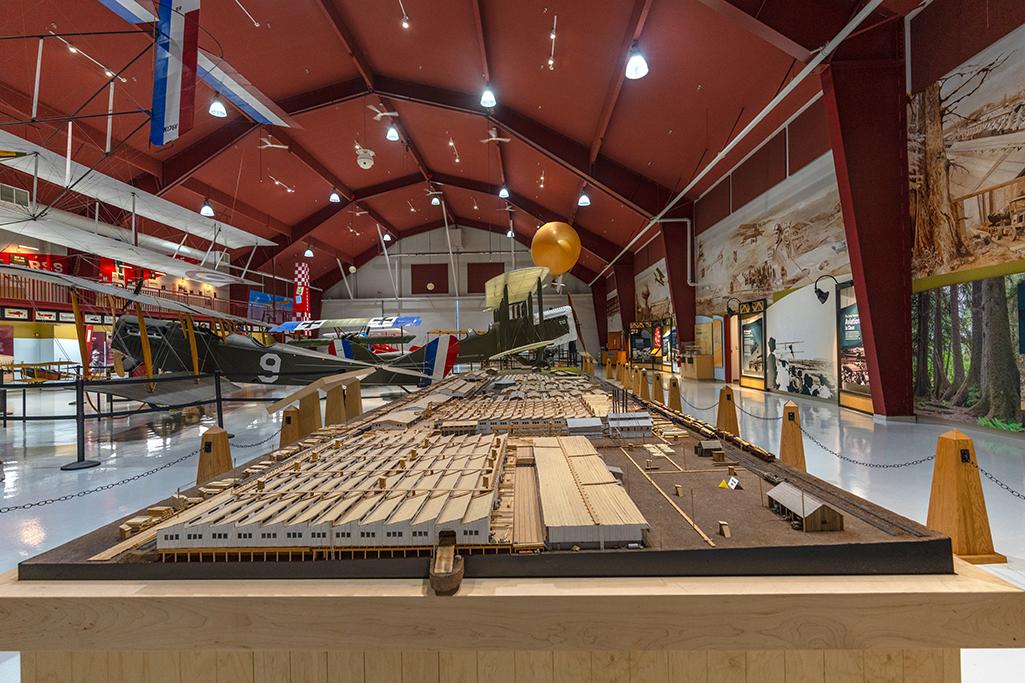
A scale model of the world's largest cut-up mill, Fort Vancouver National Historic Site / Rebecca Latson
If you look at the park map you picked up at the visitor center, you’ll see there are other buildings associated with this national historic site, including McGloughlin House located on the Oregon side of the Columbia River. I didn’t have time (or energy in the heat) to see everything, and not all the buildings were open during my visit. Special programs and period reenactors appear from time to time at this national historic site, so before you travel here, look at Fort Vancouver’s website to see a list of events, if any, that might occur on the day of your arrival.
You can see where reserving a half day, if not an entire day, is a good idea in order to soak in all the history associated with this historic site, located in Vancouver with its myriad eating and sleeping establishments. While it may not be your ultimate destination, Fort Vancouver National Historic Site is still a destination along the way and definitely worth your time.

Bees on the sunflower at the Demonstration Garden, Fort Vancouver National Historic Site / Rebecca Latson


